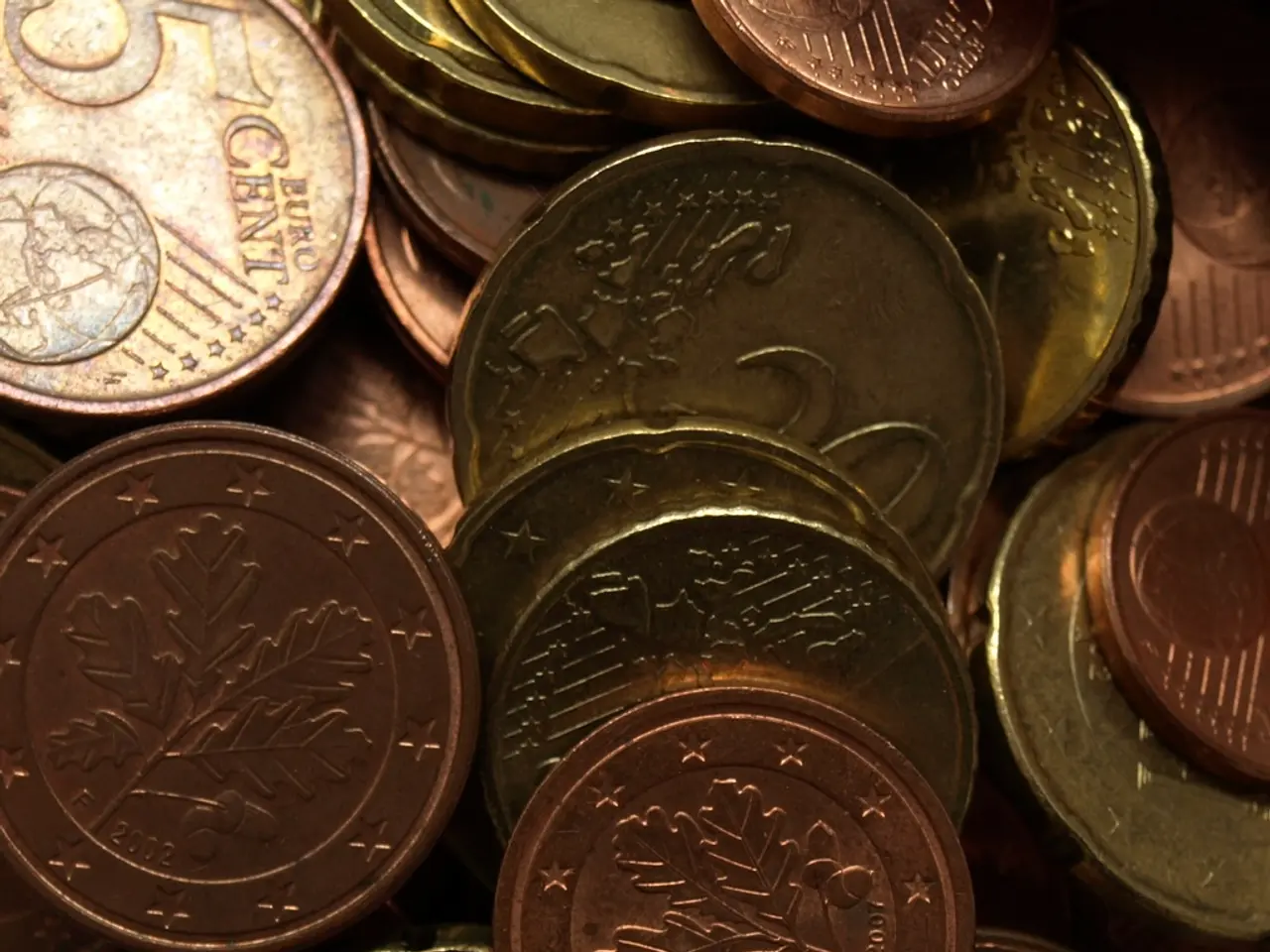Potential Economic Turmoil Shaping Up as Summer Approaches
In the midst of escalating tariffs and a volatile Middle East, the U.S. economy has managed to hold steady. Inflation rates have remained relatively stable, and unemployment rates remain near record lows. Stocks reached new highs last week.
However, imminent deadlines could shift this optimistic outlook. The first critical date is July 9, which marks the end of President Donald Trump's 90-day pause on what he calls "reciprocal" tariffs. If trade deals aren't reached with the U.S., countries could face significantly higher tariffs.
Just beyond that deadline lies the so-called X-date, when the U.S. government could default on its debt obligations, potentially causing worldwide economic turmoil. Treasury Secretary Steven Mnuchin has warned in a recent letter to congressional leaders that this could happen as early as August.
The president has put pressure on Congress to raise or suspend the debt ceiling by July 4. However, this goal is complicated by the fact that raising the debt ceiling is just one component of the president's broader economic agenda, referred to as the "One Big, Beautiful Bill."
Another potential disruption is the fragile ceasefire Trump brokered between Iran and Israel, which could unravel and push oil prices up at a time when inflation from tariffs may already be climbing.
Economist Ryan Sweet of Oxford Economics explained, "We know it's coming. There's a lag between changes in tariffs and when they show up in prices consumers pay." Other signs of economic vulnerabilities include an increasing number of unemployed individuals receiving benefits and consumers tightening their spending.
The tariff dilemma
The president's tariff policy has shown no limits in its capacity to be raised, whether on a country's goods or on a particular product. For example, tariffs on Chinese goods have been as high as 145%, but a deal reached on May 12 brought that rate down to 30%. Other tariffs currently in place include 50% on steel and aluminum, 25% on cars and auto parts, and a 10% minimum tariff on virtually every other nation's goods.
Mexican and Canadian goods are exempt from certain tariffs if they comply with the terms of the United States-Mexico-Canada Agreement. However, Trump has stated that he will impose new tariffs on Canadian goods due to the country's refusal to abandon a new tax set to take effect on Monday.
In April, after his trade policy rocked markets, Trump announced a 90-day pause, claiming it was to buy more time to work on "custom-made" trade deals with affected countries. Since then, only two trade deals have been signed, with the United Kingdom and China. Trump acknowledged that it was unrealistic for 200 countries aiming to ink trade deals with the U.S. to finalize them by July 9.
"At some point, over the next week or so, or maybe before, we're going to send out a letter," Trump stated to reporters from the White House press briefing room. "We talked to many countries, and we're just going to tell them what they have to pay to do business in the United States."
Administration officials have hinted at potential extensions for countries "negotiating in good faith," without specifying what that means or which countries it applies to.
Treasury Secretary Steven Mnuchin stated in a CNBC interview that "There are probably another 20 countries where they could go back to the reciprocal tariff (rate) of April 2 as we work on the deal. Or, if we think that they are negotiating in good faith, then they could stay at the 10% baseline."
Commerce Secretary Howard Lutnick reiterated the possibility of a regional tariff strategy on Thursday and claimed that 10 trade deal announcements were imminent.
This could mean some nations face higher tariffs compared to the April levels based on their geographic location. For instance, Vietnam was set to face 46% tariffs, while its neighbor Malaysia was set to face a 24% tariff. Alternatively, come July 9, tariff policy could simply be a matter of selecting a number at random. As Mnuchin stated, "It will all be up to President Trump."
"Whether the July 9th deadline poses trouble for the economy depends on how the Trump administration handles trade policy," Matthew Luzzetti, chief U.S. economist at Deutsche Bank, stated to CNN. "If he reinstates the historically elevated tariffs announced on 'Liberation Day,' this would revive fears of an economic slowdown that were prevalent in April." Luzzetti added that it didn't appear to be a strong possibility. "More likely, we'll see a mix of extensions, trade deals, and threats of increased tariffs on specific countries or sectors. If that is the outcome, it could leave the economy in its current holding pattern for a bit longer until uncertainty clears."
Luzzetti's team of economists is already anticipating price increases in the coming months. Reinstating more tariffs come July 9 could only intensify this inflationary trend.
Similarly, Olu Sonola, U.S. head of economic research at Fitch Ratings, stated, "Regardless of the outcome of these deadlines, we expect Consumer Price Index inflation to trend higher towards 4% at the end of the year. If 'Liberation Day' tariffs return, we'll likely see inflation higher than 4%." The latest CPI report from May showed prices rising at a 2.4% annual rate.
Another looming debt ceiling standoff?
Sweet predicts that lawmakers won't allow the U.S. to default on its debt and will eventually raise the debt ceiling in the eleventh hour. "This is essentially a very bad movie that we've seen before, so we know how it ends."
He suggested that there might be more time before the U.S. defaults than Mnuchin's estimates. (It's incredibly difficult to make precise predictions on when that will happen.) "But each passing week you naturally get a bit more nervous, because you don't want to imagine the unimaginable," Sweet said. "I just don't think that's a very likely scenario, because I think lawmakers know that it would be political and economic suicide not to raise the debt limit."
In case you're wondering, the severe economic consequences of a U.S. default could include:
- Distress in credit markets
- Disruption of economic activity
- Rapid increases in Treasury borrowing rates
- Higher borrowing costs throughout the economy, including for mortgages and auto loans, leading to reduced consumer spending and slower economic growth
- Lowering of the U.S. credit rating, making Treasury securities appear riskier, compelling investors to demand higher yields
- Harming foreign investors’ confidence in U.S. debt as a safe investment, potentially leading to reduced demand and increased Treasury yields
- Amidst the impending July 9 tariff decision and the potential X-date debt ceiling crisis, the U.S. economy's robustness is being highly scrutinized, with economists like Ryan Sweet expressing concerns about increased tariffs potentially reviving the economic slowdown fears from April.
- As the tariff policy arrangement unfolds, a mix of potential extensions, trade deals, and threats of increased tariffs on specific countries or sectors could prolong the economy's holding pattern, according to Matthew Luzzetti, chief U.S. economist at Deutsche Bank. However, his team anticipates price increases in the coming months, with reinstating more tariffs come July 9 potentially intensifying this inflationary trend.




